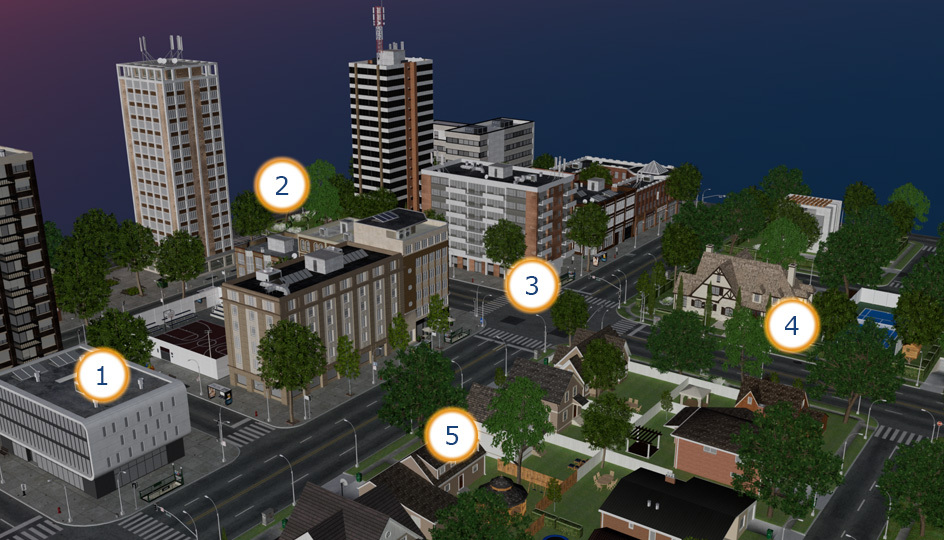
Modern telecommunications networks are divided into five network levels: from central data centers via the backbone network and regional networks to the last mile, which connects customers directly, and the end devices that enable the use of various services. This structure ensures efficient and secure communication, illustrates the technical complexity and the importance of continuous innovation in our connected world.
The data center
The first network level forms the backbone of the telecommunications network and consists of data centers that serve as central nodes for processing, storing and distributing data. These highly secure and highly available facilities house a variety of servers and storage systems that support a wide range of services, from cloud computing and web hosting to large databases and applications.
Technical aspects:
The backbone
The second network level, also known as the backbone, includes the high-performance transmission paths that connect data centers, Internet nodes and larger network nodes. This layer forms the core network, which is responsible for transmitting large amounts of data over long distances.
Technical aspects:
The regional networks
The third network level consists of regional networks that provide the connection between the backbone and the local distribution networks. This layer includes regional data centers and distribution nodes that bring services closer to the end customer and enable local data processing.
Technical aspects:
The access network
The fourth network level, also known as the access network or last mile, establishes the physical connection between the regional networks and the end customer locations. This layer includes the infrastructure and technologies needed to connect end customers directly to the telecommunications network.
Technical aspects:
The end devices
The fifth and final network layer includes users' end devices, such as smartphones, tablets, PCs and other networked devices that are connected to the telecommunications network via the access network. This layer is responsible for directly interacting with the services and applications delivered over the network.
Technical aspects: